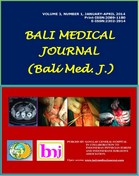Letter to the Editor MERS-CoV: An Emerging Public Health Threat
Abstract
Middle East Respiratory Syndrome Corona Virus (MERS - CoV) was first reported in September 2012 by Egyptian virologist Dr. Zakki in Saudi Arabia.1 The virus was first isolated from the lungs of a 60 year old male patient with acute pneumonia and acute renal failure.2 It is the sixth new type of corona virus similar to SARS virus and was initially referred to as the SARS like virus or simply the novel corona virus.3 Globally, from September 2012 to the end of July 2013, WHO has reported a total of 94 laboratory-confirmed cases of infection with MERS-CoV, including 46 deaths. Maximal number of cases were from Saudi Arabia (74) and 2-3 cases were reported each from Tunisia, Qatar, UK, UAE, France, Italy and Jordan. Health care workers in Saudi Arabia were screened and 7 were identified to have infection with MERS Co-V. Among them 2 were asymptomatic and 5 had mild upper respiratory symptoms.4 MERS Co-V infection may result in renal failure and acute pneumonia which often have a fatal outcome (Fatality rate- 49%). The virus has a strong affinity towards non-ciliated bronchial epithelial cells and it was found that dipeptidyl peptidase4 (DPP4) acts as a functional receptor for the virus. The amino acid sequence of DPP4 is unique to each species and is expressed in the bronchial and renal epithelial cells, which explains the involvement of kidney & lungs in the disease.5 Studies are being done to know the natural reservoir for the infection. MERS Co-V showed similar sequences as of bat and porcine corona viruses. In particular a bat corona virus carried by the genus Pipstrellus differed from the MERS Co-V by only 1.8%.6 Other study has reported that 100% of camels from Omen had protein specific antibodies against MERS Co-V. Most of the Middle East countries consume a large amount of camel meat and there is a possibility that bats harboring the virus may transmit the infection to camels.7 Outbreaks of MERS CO-V infection have been reported in several hospitals in Saudi Arabia, which confirms the human-human transmission of the disease. Patients with diabetes and renal failure are found to be especially at high risk of getting infected. It was also found that the incubation period of the disease to be 5.2 days. Although human transmission has been proved, the ability of the MERS Co-V infection resulting in an epidemic is under debate. But corona viruses are notorious for adaptation to new hosts as in the case of SARS outbreak which resulted in 800 of deaths.8 Either sub clinical or asymptomatic infections among healthcare workers will be a huge threat, since they may become the source of infection for patients with co-existing diseases.4 Several highly sensitive real time reverse transcriptase polymerase chain reactions (RT-PCR) assays are available to confirm the MERS Co-V infection from samples like broncho alveolar lavage or sputum.9 Vaccine based on spike protein have been under clinical trials.10 At the present situation World Health Organization (WHO) has advised the member states to have a strong surveillance against severe acute respiratory infections (SARI) and review any unusual disease occurrence. Recent travelers from Middle East who have symptoms of SARI should be tested for MERS Co-V infection. And among immune compromised, even atypical symptoms like diarrhea should be investigated for MERS Co-V infection. Healthcare facilities should take precautions when treating suspected or diagnosed patients, so as to prevent spread to other patients, healthcare workers and visitors.11Downloads
Download data is not yet available.
Published
2014-01-03
How to Cite
DANASEKARAN, R. et al.
Letter to the Editor MERS-CoV: An Emerging Public Health Threat.
BALI MEDICAL JOURNAL, [S.l.], v. 3, n. 1, jan. 2014.
ISSN 2302-2914.
Available at: <https://ojs.unud.ac.id/index.php/bmj/article/view/9827>. Date accessed: 13 dec. 2025.
Issue
Section
Articles


